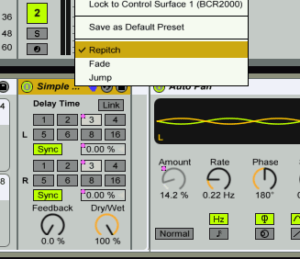

There are a few techniques to create this effect, involving modulated delays and pitch shifters.

You can use a plugin to emulate these random timing and tuning differences to create a double from a copy of the original vocal.

These differences create a sort of chorus effect that sounds familiar and natural. Create A Double from Thin AirĪ vocal double creates interest due to the minor pitch and timing differences between it and the main vocal. The edits on the double track ensure that the two tracks lock in time. The green track is the main lead vocal and the yellow track is a double created from an alternate playlist. Also try to EQ the double to enhance the lead, which might mean making the double airier or warmer than the lead. Try the double right behind the lead, just to the side of the lead, or hard-panned away from the lead. As far as panning goes, there is no rule. Do your best to slice, stretch, Vocalign, tune, and do whatever is necessary to align the double to the lead vocal in a musical way. You may need to finesse the pitch and timing of these types of doubles to match the main vocal. You are actually creating a double from a real performance of the same line. Sometimes those alternate tracks also come in handy when I find a word or phrase on the main lead vocal that feels awkward, doesn’t tune properly, or contains a defect, like a click or pop, that can’t easily be removed.Īdding an alternate vocal takes as a double is not cheating. During the editing or mixing process, I can grab a word here or there to use a double.

Besides the lead vocal comp that the artist and producer agree to, I try to keep at least a few alternate options of the vocal takes on hidden playlists, inactive tracks, or track alternatives. Keep Every Vocal Take!Īs you are recording a song, don’t automatically delete a vocal take that isn’t perfect. There are a handful of ways to create doubles and each method is effective as the next when used appropriately. Hopefully, the artist or producer left me some optional double tracks to play with, but if there is not a double track in the mix I try to create one. During a mix, I might feel that a certain vocal phrase could sound more intense or interesting if it were doubled. Often, we don’t know exactly how the musical arrangement will come together until we get into the mixing phase of production. You could double a verse and leave the pre-chorus a single voice with a longer reverb tail, or keep a simple, single vocal in verse and save the double for the hook. Try to keep things interesting and break up any monotony by adding new elements whenever the motion seems stagnant. A proper double can add texture, thicken a tone and mask pitch problems.Ī particular artist may have a formula for when to add a double, but there are no set rules. Artists like Eminem, Kendrick Lamar, Madonna, and Chris Cornell, not to mention the Beatles mastered the art of doubling lead vocals. Doubling an entire vocal can work for some people, but sometimes doubling an entire verse can sound sloppy or dated in style. Doubles can also increase the sense of power, like when a rapper doubles their entire lead vocal. Lead vocal doubles can be used for emphasis and punctuation, like when the last word of an important line is doubled. We create doubles by recording matching performances onto new tracks that play along with the primary track. This type of double might even be used to add some energy or color when treated with a parallel-processing technique, like drastic EQ, compression, or distortion. We should all know that duplicating an audio track is not a double, right? Duplicating the track will make the volume louder. The producer usually explains to me that they were hoping for it to sound like the vocal is doubled. I often come across mix sessions in which a lead vocal has been duplicated onto another track.


 0 kommentar(er)
0 kommentar(er)
